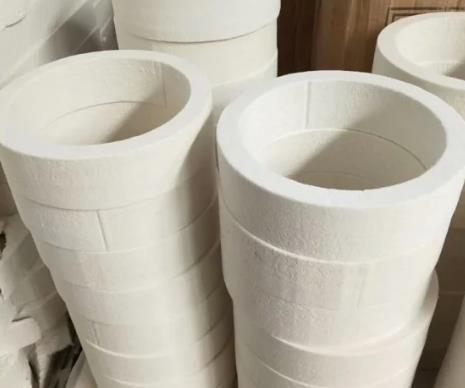Temperature Resistance: Ceramic fiber vacuum formed insulation can withstand much higher temperatures than most other types of insulation materials, including fiberglass and mineral wool. This makes it ideal for use in high-temperature applications.
Thermal Conductivity: Ceramic fiber insulation has a lower thermal conductivity than many other insulation materials, which means it can effectively reduce heat transfer and improve energy efficiency.
Weight: Ceramic fiber insulation is lightweight compared to other high-temperature insulation materials, such as refractory bricks. This can make it easier to handle and install.
Durability: Ceramic fiber insulation is durable and can withstand thermal cycling and exposure to chemicals, making it suitable for use in harsh environments.
Cost: Ceramic fiber insulation can be more expensive than other types of insulation materials, such as fiberglass and mineral wool. However, its high-temperature resistance and durability can make it a cost-effective option in certain applications.
Health and Safety: Ceramic fiber insulation can pose a health risk if inhaled in the form of fibers or dust. Proper handling and personal protective equipment are required to minimize this risk. Other insulation materials, such as fiberglass, can also pose a health risk if not handled properly.
Overall, 1260C ceramic fiber vacuum formed ceramic fiber vacuum formed insulation is a versatile and effective solution for high-temperature insulation needs in a variety of industrial applications. While it has some disadvantages, such as cost and health risks, its high-temperature resistance, low thermal conductivity, and durability make it a popular choice for many applications where other insulation materials may not be suitable.
There are several alternatives to ceramic fiber insulation for high-temperature applications. Here are some examples:
Refractory bricks: Refractory bricks are a traditional type of high-temperature insulation material made from ceramic materials. They are durable and can withstand extreme temperatures, making them suitable for use in furnaces, kilns, and other high-temperature applications.
Calcium silicate insulation: Calcium silicate insulation is a non-combustible insulation material that can withstand temperatures up to 1100 degrees Celsius (2012 degrees Fahrenheit). It is often used in industrial applications, such as power plants and refineries.
Mineral wool insulation: Mineral wool insulation is made from natural or synthetic mineral fibers and can withstand temperatures up to 815 degrees Celsius (1500 degrees Fahrenheit). It is commonly used in industrial and commercial applications, including furnace linings and pipe insulation.
Insulating firebricks: Insulating firebricks are lightweight, low-density bricks made from ceramic materials. They have high insulating properties and can withstand temperatures up to 1650 degrees Celsius (3002 degrees Fahrenheit).
Aerogel insulation: Aerogel insulation is a lightweight, high-temperature insulation material made from silica. It has excellent insulating properties and can withstand temperatures up to 650 degrees Celsius (1202 degrees Fahrenheit).
Silica insulation: Silica insulation is a high-temperature insulation material made from amorphous silica. It can withstand temperatures up to 1000 degrees Celsius (1832 degrees Fahrenheit) and is commonly used in industrial applications.
Overall, there are several alternatives to ceramic fiber insulation for high-temperature applications. The choice of insulation material will depend on factors such as the specific application, temperature requirements, durability, and cost considerations.

Previous: Inline Plastic Scrap Granulator: A Revolutionary Solution for Plastic Waste Recycling
Next: Ribbon Mixer: A Versatile Mixing Solution for Various Industries
Copyright:@2020-2021
Comments Please sign in or sign up to post.
0
0 of 500 characters used